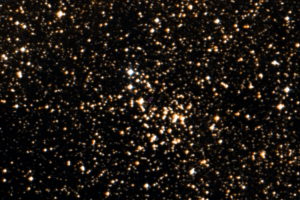The properties of the stellar cluster Pismis 18 unveiled by the Gaia-ESO Survey. The study: “The Gaia-ESO Survey: The inner disc, intermediate-age open cluster Pismis 18” of D. Hatzidimitriou (University of Athens), recently appeared on A&A

The inner disk of the Milky Way is the region of the disk of our Galaxy within about 26000 light years from its center. This region is of particular interest, since it lies between the bulge and the outer disk of the Milky Way. However, a few studies of the stellar clusters in the inner disk exist to date, despite they could reveal vital information on the structure, dynamic and chemistry of this region. This is mainly due to difficulty in separating the true cluster members from the contaminating stars lying in the same field of view of given clusters, but at different distance.
Recently, our knowledge of the inner disk of the Milky Way is improving thanks to the Gaia-ESO Survey (GES). In fact, the observations of 65 open clusters and more than 100000 stars in our Galaxy with the spectrograph FLAMES mounted on the Very Large Telescope of the European Southern Observatory, homogeneously analyzed by the astronomers of the several institutions, among which the INF-Astronomical Observatory of Palermo, are shading some lights on the structure, evolution, dynamic and chemical properties of the Milky Way.
In the framework of the GES project, the astronomer D. Hatzidimitriou (University of Athens / National Observatory of Athens) led the study of the open cluster Pismis 18 based on GES data and observations of the European Space Agency satellite Gaia. The team of astronomers analyzed the spectra of 142 stars in the field of this cluster, confirming the membership of 26 stars: 6 red clump giants and 20 upper Main Sequence stars. In this way, they could determine the average radial velocity of the cluster (about 37.5 km/sec), its age (about 700 million years), and its distance (about 8000 light years). Furthermore, they determined that these stars are more abundant of metals (with respect hydrogen) than our Sun, while the abundance of alpha-elements (such as carbon, nitrogen, and oxygen) over iron is compatible with solar values. The study is described in the article: “The Gaia-ESO Survey: The inner disc, intermediate-age open cluster Pismis 18“, recently appeared on Astronomy & Astrophysics, also with the collaboration of the astronomers E. Flaccomio e F. Damiani of INF-Astronomical Observatory of Palermo.
The figur (link) shows a DSS2 image of Pismis 18.
by Mario Giuseppe Guarcello ( follow mguarce)
